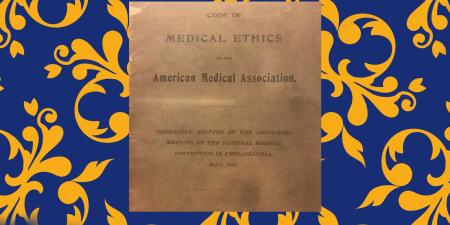Abstract
When a physician refers a patient for a nonclinical reason, that patient has been “turfed.” There are numerous reasons why turfing is clinically, legally, and ethically problematic; a main one is that the practice is physician centered and does not serve or center the best interests of patients. Legally, turfing patients is distinct from dumping patients: there are no civil or criminal laws regulating turfing, unlike dumping. Clinically and ethically, however, both turfing and dumping are poor practice, express poor character, and damage patient-physician and interprofessional relationships. This manuscript canvasses clinical, legal, and ethical dimensions of turfing and dumping that deserve investigation.
Patient Dumping vs Patient Turfing
Physicians and hospitals sometimes desire to transfer or rid themselves of certain patients who, for various reasons, are deemed troublesome or undesirable. These transfer practices are known as “turfing” or “dumping,” and they are frequently scrutinized, as such practices are traditionally at odds with ethical fundamentals of the medical profession, which centers caring for patients and putting their best interests first. Understanding the differences between patient turfing and patient dumping can help illuminate the spectrum of physicians’ legal repercussions. While both practices may seem similar, each practice has different legal ramifications.
Dumping. Patient dumping is defined as “[t]he practice, often by private, for-profit hospitals, of transferring indigent, uninsured patients to other, usually public, hospitals for economic reasons; patient-transfer guidelines and laws are generally limited to cases of ‘unstable’ emergencies and women in active labour.”1 In 1986, the US Congress enacted the Emergency Medical Treatment and Active Labor Act (EMTALA) in response to growing concerns of patient dumping, wherein “hospitals were discharging patients before stabilizing them and refusing to care for poor people with medical emergencies”2 and instead transferring them to other hospitals. EMTALA made patient dumping illegal in the emergency context, federally mandating that Medicare-participating hospitals provide emergency care within their abilities and that no patient be turned away based on ability to pay.2,3 EMTALA notably requires such hospitals to “stabilize” emergency patients before transfer, with the threat of civil penalties for hospitals and physicians who fail to meet its statutory requirements.2,3 Penalties may include “monetary fines, exclusion from Medicare reimbursement, and federal prosecution.”4
EMTALA, while improving on patient protections that existed prior to its enactment, has been criticized as an inadequate solution, as the problem of patient dumping is ongoing.3 A recent study has shown that uninsured and underinsured patients—eg, Medicaid beneficiaries or those requiring specialized care—“are more likely to be transferred than admitted compared with patients who have private insurance or Medicare coverage.”5 Critics note that EMTALA is an incomplete response to broader systemic problems caused by the “underfunded health care system of the United States” and that even if EMTALA is maximally enforced, the “solution to patient dumping may lie in addressing its root causes,” ie, in addressing systematic inequities of the US health care system that leave many patients without health insurance or funding.3
Turfing. Patient turfing is “the act of foisting a patient to another service or hospital by manipulating the patient’s history so that the transfer seems appropriate.”6 Manipulation refers to a physician making the patient’s medical issue appear too difficult for them to treat and enables the physician to transfer a patient under the guise of being incapable of treating the patient’s medical issue.7 What constitutes “manipulation,” however, is debatable (eg, actually manipulating patient records would be a legal violation). Most instances of turfing likely do not involve illegal record tampering. The crux of a turf is that some wrongful motive or conduct is tied to the action to make the transfer inappropriate.8 In other words, there is no medical basis for turfing, as the original physician is capable of caring for the patient before transfer9; thus, patient turfing may be done purely for a physician’s convenience. Turfing is distinct from referral, or “[t]he act of sending of a patient to another physician for ongoing management of a specific problem, with the expectation that the patient will continue seeing the original physician for co-ordination of total care” or sending a patient to a “specialist or subspecialist, because the patient has a disease or condition that the primary or referring physician cannot, or does not wish to, treat.”8 Hence, there is a distinction between what would be deemed an “appropriate transfer” of a patient and the turfing of a patient, which is generally viewed as inappropriate. Additionally, turfing is distinguished from patient dumping, which is limited to the context of emergency care of indigent patients.
There are a variety of nonmedical justifications for physician turfing of a patient. For example, a physician’s choice to turf a patient may be based on whether that physician finds a particular patient annoying or difficult.10 Additionally, a physician may be more likely to turf a patient if there is no financial benefit to caring for a patient, as when a physician is salaried.9 Some might perceive a financial benefit to turfing, as turfing often allows a physician to cull “sick patients out of the practice to make the utilization profiles look better,” thus allowing a physician or practice to appear to be a “low-utilizing provider.”9 Furthermore, some physicians will turf a patient as a means of “defensive medicine,” or protecting themselves from legal liability (eg, a physician might “refer” a high-risk patient to another physician, eliminating the possible legal penalties for providing or refusing care to that patient).11 Regardless of the potential justifications for patient turfing, the practice can incur real harm. Indeed, turfing’s consequences for patients and other physicians often outweigh the perceived benefits.
Most instances of turfing likely do not involve illegal record tampering.
From a legal standpoint, patient turfing is not considered a medical negligence issue wherein a patient is injured by a breach of standard of care. Hence, physicians are not legally sanctionable for turfing. Patient turfing at its core is a referral to another physician or health care practitioner. Although it may be considered unethical in many instances, patient turfing is simply a “referral” or inappropriate transfer and is not illegal. By contrast, patient dumping is more closely related to malpractice and patient harm, as it refers to the refusal to provide care or failure to stabilize patients before transferring them.
Distinguishing Appropriate Transfers From Turfing
Catherine Caldicott describes several criteria to help determine whether a transfer is appropriate or a turf.9 One criterion is the perception of the receiving physician. When a patient is turfed, the receiving physician may have negative feelings of anger and frustration and perceive that “the patient disposition is based on informal norms” and not on “clinical or research evidence” relevant to the patient’s needs. Another criterion is whether the transfer prioritizes physicians’ needs over patients’. For example, following a transfer, a physician’s feelings of relief and satisfaction in no longer having to care for a patient may be an indication that the patient was turfed and that the transfer was motivated primarily by the physician’s desire to offload an undesired patient. A third criterion is whether the transfer reflects interspecialty conflict or collegiality. A patient transfer may be fostered by various specialties’ disagreements regarding the scope of their responsibilities toward patients; disagreements and “conflicts in priorities” between emergency physicians and internal medicine physicians are particularly well recognized.12 Such disagreements between specialties supersede professional collegiality, resulting in a patient transfer being a turf.10
Negative Effects of Turfing
Turfing can negatively impact interprofessional relationships between physicians and other health care professionals. Although receiving physicians may feel a sense of pride in caring for a turfed patient, they often cannot—absent a patient being beyond the physician’s skill to treat or a physician’s exercise of conscience—refuse to provide care to the transferred patient.9 This obligation to treat often creates tension between the physicians initiating the transfer and the receiving physicians; the receiving physicians often feel frustrated because they are stuck caring for a patient they perceive another physician as not wanting to deal with.9,13
Turfing can also negatively impact the patient-physician relationship. Patients who are turfed may be perceived by physicians as “difficult” and therefore as “deserving of inferior care.”10 Moreover, turfed patients may suffer further when they pick up on physicians’ negativity.9 Indeed, one study demonstrated that turfed patients may have different care experiences than non-turfed patients and that these experiences skew negative.14 These negative perceptions and experiences can in turn lead to a breakdown of trust in the patient-physician relationship, which is built upon mutual respect.13 A lack of continuity of care is a further risk of turfing, as many physicians who initiate a turf do not wish to treat the patient, exacerbating the risk of lack of care coordination.
Legal Recommendations
There are a few options to limit or stop patient turfing. One potential solution would be a ban on patient turfing in a hospital’s or organization’s code of ethics or professional conduct. For example, the American Medical Association (AMA) Code of Medical Ethics stipulates that a physician terminating a relationship with a patient has a fiduciary duty to ensure continuity of care or, if that is not possible, to notify the patient in advance so that the patient can “secure another physician.”15 With regard to discharging a patient (especially relevant in the context of dumping), the AMA Code states that the “discharge plan should be developed without regard to socioeconomic status, immigration status, or other clinically irrelevant considerations.”16 Hospitals and other health care organizations should incorporate AMA Code guidance related to turfing and dumping in their policy guidelines and professional codes. Additionally, it is important that hospitals include such ethical obligations not only in policy, but also in employment contracts, such that employed physicians will be contractually bound by these ethical guidelines.
However, ethical obligations—even if written in hospital policy or contract—may not be enough to eliminate patient turfing. Without the threat of more significant legal ramifications (eg, civil or criminal liability) for failing to adhere to an ethical code, physicians may not fulfill these ethical obligations due to a lack of penalty. Establishing legal sanctions for a failure to adhere to ethical guidelines could help limit patient turfing because civil or criminal sanctions would carry serious consequences for physicians, providing a strong deterrent. Indeed, malpractice remedy already provides a legal deterrent against some turfs. Legal sanctions could be enacted by expanding EMTALA to cover patient turfing or by creating another civil statute that would similarly target patient turfing, just as EMTALA targets patient dumping in emergency care settings. Such an anti-turfing statute could also potentially create an option for patients to file a civil claim against a physician for turfing when a traditional common law claim like negligence is not available.
Attempting to sanction patient turfing, however, would be difficult and possibly futile. First, it may be difficult to prove that the patient was intentionally turfed. For example, the physician who initiates the patient transfer could argue that they were ill-equipped to care for that particular patient, as physicians are not obligated to care for patients when the necessary care is outside the scope of their training and abilities.17 Physicians generally are not legally obligated to establish a relationship with or treat a patient unless they choose to.18 Thus, if physicians argue that they are ill-equipped or had not agreed to treat the patient—and that this is why they are initiating transfer—it would be difficult to penalize them for patient turfing because neither reason (on its face) is illegal or unethical. Hence, the intent behind a physician’s decision to transfer could often be mixed or difficult to prove.
Therefore, a novel legal solution—ie, a new cause of action or new statute at the local jurisdictional level—for turfing would be difficult to enforce, as it is often an ethical problem. State board involvement and medical malpractice law—both existing regulatory options—may be the best way to regulate turfing if greater awareness of the problem can be leveraged to address it.
Conclusion
Creation of new laws to sanction turfing would come with challenges, as demonstrated by the history of EMTALA’s uneven enforcement and inability to completely solve patient dumping.3 However, implementing the law did have impact; the threat of penalty did influence hospital and physician action.3 Additionally, any hypothetical statute prohibiting turfing would require adequate specificity to strengthen its enforcement potential. While the notion of creating new laws to govern turfing and allowing for new sanctions may be controversial, sometimes law is needed to help solve problems in health care when existing ethical guidelines—such as those found in the AMA Code—are not enough to influence the behavior of physicians or medical organizations.
References
-
Dumping. Segen’s Medical Dictionary. Farlex; 2012. Accessed July 14, 2023. https://medical-dictionary.thefreedictionary.com/dumping
- Black L. Defining hospitals’ obligation to stabilize patients under EMTALA. Virtual Mentor. 2006;8(11):752-755.
- Kahntroff J, Watson R. Refusal of emergency care and patient dumping. Virtual Mentor. 2009;11(1):49-53.
-
Lulla A, Svancarek B. EMS USA Emergency Medical Treatment and Active Labor Act. In: StatPearls. StatPearls Publishing; 2022. Accessed January 25, 2023. https://www.ncbi.nlm.nih.gov/books/NBK539798/
- Venkatesh AK, Chou SC, Li SX, et al. Association between insurance status and access to hospital care in emergency department disposition. JAMA Intern Med. 2019;179(5):686-693.
-
Turfing. Segen’s Medical Dictionary. Farlex; 2012. Accessed January 23, 2023. https://medical-dictionary.thefreedictionary.com/turfing
-
Kongstvedt PR. Nonutilization-based incentive compensation for physicians. In: Kongstvedt PR, ed. The Managed Health Care Handbook. 4th ed. Wolters Kluwer; 2001:chap 10.
-
Referral. Segen’s Medical Dictionary. Farlex; 2012. Access July 14, 2023. https://medical-dictionary.thefreedictionary.com/referral
- Caldicott CV. Turfing revisited. Virtual Mentor. 2012;14(5):389-395.
-
Caldicott CV. “Sweeping up after the parade”: professional, ethical, and patient care implications of “turfing.” Perspect Biol Med. 2007;50(1):136-149.
-
Hauser MJ, Commons ML, Bursztajn HJ, Gutheil TG. Fear of malpractice liability and its role in clinical decision making. In: Gutheil TG, Bursztajn HJ, Brodsky A, Alexander V, eds. Decision Making in Psychiatry and the Law. Williams & Wilkins; 1991:209-226.
- Kanjee Z, Beltran CP, Smith CC, et al. “Friction by definition”: conflict at patient handover between emergency and internal medicine physicians at an academic medical center. West J Emerg Med. 2021;22(6):1227-1239.
- Stern DT, Caldicott CV. Turfing: patients in the balance. J Gen Intern Med. 1999;14(4):243-248.
- Caldicott CV, Dunn KA, Frankel RM. Can patients tell when they are unwanted? “Turfing” in residency training. Patient Educ Couns. 2005;56(1):104-111.
-
American Medical Association. Opinion 1.1.5 Terminating a patient-physician relationship. Code of Medical Ethics. Accessed January 23, 2023. https://code-medical-ethics.ama-assn.org/ethics-opinions/terminating-patient-physician-relationship
-
American Medical Association. Opinion 1.1.8 Physician responsibilities for safe patient discharge from health care facilities. Code of Medical Ethics. Accessed January 23, 2023. https://code-medical-ethics.ama-assn.org/ethics-opinions/physician-responsibilities-safe-patient-discharge-health-care-facilities
-
Clark B, Fuse Brown EC, Gatter R, McCuskey EY, Pendo E. Health Law: Cases, Materials and Problems. 9th ed. West Academic Publishing; 2022.
-
Blake V. When is a patient-physician relationship established? Virtual Mentor. 2012;14(5):403-406.



